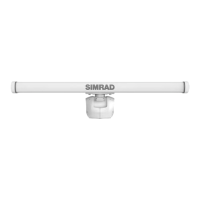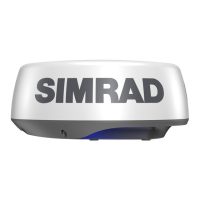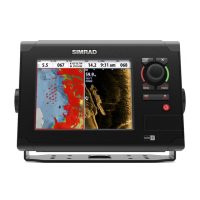What to do if Simrad HALO 5000 Marine Radar scanner detect fails?
- KKelly WilsonAug 21, 2025
If the Simrad Marine Radar scanner detect fails, it could be due to an interruption in communication between the pedestal and the R5000 processor. First, verify that the pedestal is receiving power. Next, with the R5000 processor powered on, check if the Ethernet LEDs are flashing. Finally, check the Ethernet connections.





